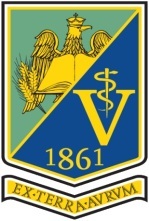Published in Scientific Works. Series C. Veterinary Medicine, Vol. LXX, Issue 2
Written by Crina Raluca ANDREI, Nicolae Tiberiu CONSTANTIN, Florin Petrișor POSASTIUC, Alexandru DIACONESCU, Mariana IONIŢĂ, Ioan Liviu MITREA
With a long history and a wide distribution across the globe, the population of buffaloes (Bubalus bubalis) increased by 1.3% annually between 2002 and 2017, suggesting rising interest in this species. The results of assisted reproduction technologies in buffaloes are not as fulfilling as in cows, for this purpose, any other possible inconvenience must be removed. Parasitic and infectious diseases represent the major cause that negatively impact biotechnologies, especially in embryo transfer, since, although the relocation of an embryo from a seropositive donor to a seronegative recipient seems to be disease-free, in 25% of cases abortion occurs. Neosporosis is a parasitosis with effects that interest mainly the female reproduction, being one of the most important abortigenic entities among buffaloes, with an average prevalence in Australia and America of approximately 88%, in Africa 68%, in Asia 54.7-66.7%, and in Europe varying from 9.1% (Czech Republic) to 68.5% (Romania). In.order.to.monitor and control neosporosis, it is imperative that all
three existing categories involved in the embryo transfer process (donors, recipients, embryos) should be tested and
proved to be free.
[Read full article] [Citation]



